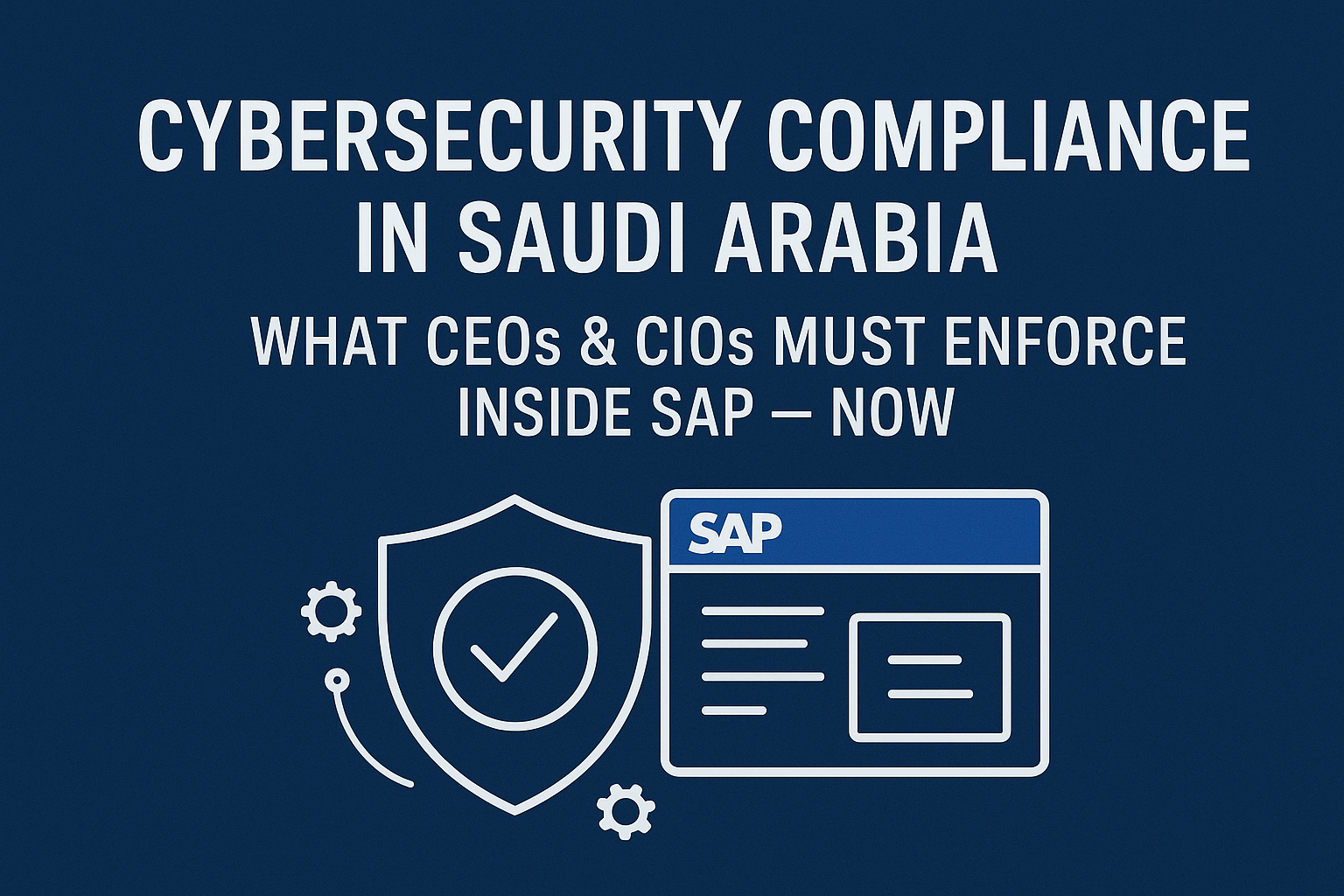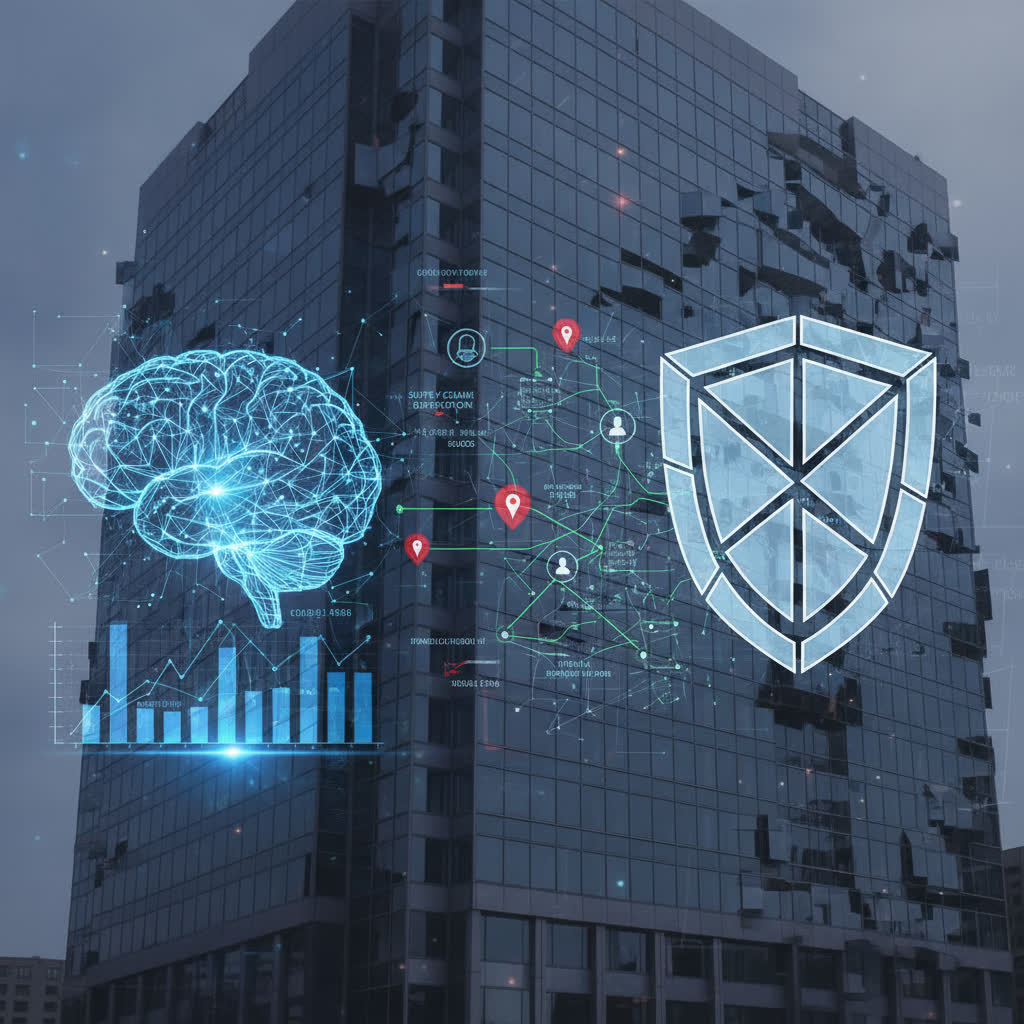Artificial intelligence is transforming digital operations for organizations across all sectors. Its presence in business technology has forced companies to rethink security and compliance practices within their IT landscapes. Nowhere is this impact more pronounced than in business-critical platforms like SAP, which serve as the foundation for enterprise resource planning, finance, and supply chain operations. As cyber threats become more sophisticated, organizations require advanced solutions to stay ahead of risks, particularly in the realm of SAP security and compliance. AI-driven technologies are bringing new capabilities to solve old challenges and are redefining how modern enterprises maintain strong security and regulatory alignment.
Understanding SAP Environments and Their Security Needs
SAP systems lie at the core of many large and medium organizations. These platforms handle sensitive business data and power mission-critical processes. Because of this, maintaining security and regulatory compliance within SAP environments is a demanding task. Administrators face a multitude of responsibilities ranging from access management to the enforcement of industry-specific regulations. Security lapses or compliance failures in SAP systems can expose companies to data breaches, operational disruptions or heavy penalties from regulatory bodies. Organizations require robust tools and strategies to prevent unauthorized access and preserve data integrity in such environments.
SAP landscapes are notoriously complex. With intricate role structures, customizations and cross-system integrations, standard security approaches often fall short. Traditional methods primarily rely on manual controls and periodic reviews, which are no longer adequate for dealing with today’s rapidly shifting cyber risk landscape. Attackers exploit gaps left by legacy tools or human oversight. Modern SAP systems must embrace advanced technologies to protect themselves from these dangers. Artificial intelligence, when integrated into SAP security operations, introduces automation, accuracy and speed—addressing the deficiencies of older approaches.
The Growing Threat Landscape for SAP Systems
Cyber threats targeting SAP environments have increased both in volume and complexity. Malicious actors often aim for these critical systems because the data and processes they support are so valuable. Attack vectors range from brute-force attacks on user credentials to advanced persistent threats that exploit custom application vulnerabilities. Organizations must contend with risks not only external but also internal—privileged insider accounts can misuse access rights, sometimes intentionally, sometimes accidentally. Each pathway introduces potential breaches that legacy monitoring tools may miss.
Regulatory concerns add another demanding dimension. With the global expansion of data privacy laws and industry compliance requirements, such as General Data Protection Regulation (GDPR), Sarbanes-Oxley Act (SOX) or ISO 27001, SAP system administrators must juggle both security and audit-readiness. Meeting these requirements is time-consuming without help from advanced analytics or automation. Threats and compliance demands evolve quickly. Companies that cannot keep pace risk reputational harm as well as legal consequences. AI-powered technologies stand out for their ability to detect subtle anomalies, predict emerging risks and automate compliance monitoring with minimal manual effort.
How Artificial Intelligence Powers Modern SAP Security Operations
AI-driven security frameworks fundamentally change how organizations protect their SAP environments. By learning from vast datasets and identifying patterns beyond human capabilities, these systems help teams stay ahead of both known and unknown threats. AI can process logs, audit trails, and user activities at scale to catch subtle, early warning signs of malicious behavior. Such pattern recognition far surpasses conventional rule-based controls. Machine learning models refine their detection capabilities over time, becoming more accurate and reliable with each exposure to new data.
AI also transforms risk assessment procedures. For example, it automates the detection of suspicious access attempts, abnormal transactions or policy violations across extensive SAP landscapes. Instead of relying on periodic and often manual audits, AI-powered solutions provide real-time alerts and detailed risk scoring. This lets administrators address vulnerabilities before attackers can exploit them. Organizations gain a preventative rather than reactive security posture. Furthermore, AI assists with compliance documentation, ensuring ongoing audit-readiness by continuously checking system configuration against regulatory requirements.
Automation in SAP Authorization and Role Management
Managing user access represents a cornerstone of SAP security. Each user’s access privileges must reflect their job responsibilities, nothing more or less. Traditional role design and authorization review processes can become labor-intensive and prone to error. Mistakes or outdated access rights expose sensitive functions to misuse or compromise. Artificial intelligence dramatically streamlines these operations through intelligent automation.
AI-based engines can map user activities and automatically propose optimized authorization roles. By analyzing usage data, these systems identify which permissions users actually need, then flag excessive or conflicting privileges. Such insights enable more precise role assignments and eliminate unnecessary access. Automated solutions also anticipate when employees require elevated permissions for new projects, reducing bottlenecks without sacrificing security. As employee positions or project scopes change, AI quickly adapts authorization assignments, minimizing administrative overhead and ensuring compliance at every organizational level.
Ensuring Segregation of Duties (SoD) Compliance
One of the pressing compliance standards within SAP environments is segregation of duties. Segregation of duties ensures that no single user can perform incompatible tasks that may result in fraud or error. Monitoring SoD violations manually is daunting, especially across large, complex organizations with thousands of users and roles. AI engines excel at evaluating vast matrices of user-role-task assignments and surfacing real-time SoD conflicts. This helps security administrators quickly resolve violations, helping organizations stay compliant with regulations and reduce the risk of internal fraud. Furthermore, automated SoD monitoring accelerates preparations for internal and external audits, ensuring discrepancies are addressed proactively rather than reactively.
Enhancing Threat Detection with AI in SAP Systems
Traditional SAP security tools are limited by their rule-dependent nature. Predefined control sets can only catch threats that match expected patterns. However, many attacks today utilize sophisticated tactics specifically designed to evade static defenses. AI-driven security platforms bridge this gap by applying advanced anomaly detection techniques. These systems continuously analyze massive streams of SAP log files, configuration changes and application activities, comparing real-time behavior to established baselines. Any deviations from normal, even those too complex for human review, raise immediate alarms.
Behavioral analytics represents a key capability. For instance, if a typical user suddenly downloads sensitive financial data at midnight from a foreign location, AI-powered security analytics quickly flags the incident as suspicious. These systems also adjust for legitimate business needs—machine learning models can distinguish between an employee’s changing workload versus genuine malicious activity. Over time, AI solutions deliver fewer false positives, so teams respond only to verified threats. The intelligence gained from such systems helps address stealth attacks, such as credential abuse or privilege escalation, before data loss or process disruption occurs.
Reducing False Positives and Alert Fatigue
Security teams often become overwhelmed with alerts generated by legacy monitoring tools, many of which turn out to be false alarms. Too many unnecessary warnings reduce the likelihood critical events will receive prompt attention. AI addresses this through adaptive learning. As it analyzes outcomes from previous alerts, the system refines its detection models, filtering out benign incidents and sharpening focus on the ones that matter. Fewer false positives mean teams are empowered to act decisively, reducing both alert fatigue and incident response time.
AI Applications in Regulatory Compliance for SAP
Regulatory compliance places stringent requirements on organizations using SAP solutions. Laws like GDPR, SOX, and ISO 27001 demand continuous monitoring, periodic reporting, and rapid response to security incidents. AI helps companies meet these standards through automation, intelligence, and documentation. Automated compliance checks run in the background, consistently validating SAP configurations against the most current regulatory frameworks. This enables businesses to maintain readiness for surprise audits and easily demonstrate their compliance status to auditors and regulators.
AI also plays a role in documentation. Many regulations require organizations to maintain detailed records of access provisioning, role assignments, and incident responses. AI-driven audit tools generate these records automatically as they detect changes within the SAP environment. Should a regulator or auditor request evidence, organizations can produce detailed reports at a moment’s notice, saving valuable time and ensuring complete accuracy. This level of traceability builds confidence with regulatory authorities and business stakeholders alike.
Streamlining GDPR, SOX, and ISO 27001 Processes
Different regulations pose unique requirements. GDPR, for example, emphasizes data privacy and the right to be forgotten. AI-based tools can track where personal data resides within SAP systems and ensure timely erasure upon request. SOX focuses on financial reporting controls—AI monitors role design and segregation of duties in alignment with internal audit standards. ISO 27001 introduces a comprehensive information security framework, asking for continuous risk assessment and control evaluation. AI adapts to these diverse requirements, applying regulation-specific policies to SAP data and processes seamlessly, without the need for constant human intervention.
Proactive Risk Management with AI in SAP
Risk management in SAP environments extends beyond basic preventative measures. A resilient organization embraces proactive strategies capable of identifying emerging risks before they materialize. Here, AI-powered analytics provide early warning systems by correlating numerous data sources, such as user behavior analytics, system configuration changes and real-time network monitoring. These automated systems expose hidden vulnerabilities or risky trends invisible to traditional reviews. By surfacing these insights promptly, organizations can remediate weaknesses ahead of malicious actors or regulatory inspections.
Predictive analytics represents another transformative AI capability. Using current and historical SAP activity data, machine learning algorithms model probable risk scenarios and their likely impact on business operations. This empowers IT, security and compliance leaders to allocate resources and prioritize mitigation efforts according to real-world risk exposure. Correlation engines also link external threat intelligence feeds to SAP-specific data, aligning internal defense measures to the rapidly changing cyber threat landscape. This flexibility, offered by AI automation, sets a new standard for SAP risk management and governance.
Continuous Controls Monitoring and Incident Response
Manual security and compliance checks happen infrequently, leaving organizations vulnerable during the periods in between reviews. AI enables continuous controls monitoring by automatically identifying changes to user privileges, system configurations and critical workflows. When changes deviate from policy or threaten compliance, automated workflows can block access, trigger an incident response or escalate the issue to security teams instantly. This level of detection and response closes gaps inherent in traditional periodic monitoring, ensuring that SAP systems remain hardened against both external attacks and insider threats at all times.
Simplifying SAP Migrations and Upgrades via AI
Many businesses are transitioning from legacy SAP solutions to new platforms such as S/4HANA. Migrations and upgrades introduce security and compliance challenges as role structures, custom authorizations and business processes often undergo significant change. Manual validation during such projects increases the risk of introducing vulnerabilities or breaking compliance with industry standards. Artificial intelligence helps automate the critical tasks associated with authorization management, data mapping and post-migration verification, greatly reducing risk and accelerating transition timelines.
Machine learning tools can compare pre- and post-migration access models, detecting permission mismatches and identifying risky changes automatically. AI also assists in cleansing legacy role designs prior to migration, recommending streamlined profiles aligned with current business needs and compliance criteria. Automating these steps allows IT and compliance teams to focus on strategic decisions rather than administrative effort, resulting in safer, quicker migrations that preserve the security and audit-readiness of core SAP systems.
Supporting Internal Controls and Audit Readiness
Maintaining audit-readiness remains a constant challenge for organizations operating SAP platforms. Auditors regularly demand comprehensive evidence of controls such as user provisioning, segregation of duties, and change management. Manual preparation for such audits absorbs significant staff time and risks oversight or incomplete documentation. Artificial intelligence offers continuous visibility into the status of internal controls, providing up-to-date, easily accessible reports for both internal and external audits. This streamlines the audit process and minimizes staff burden.
AI-powered audit support systems can verify whether events such as access requests, approvals and revocations occurred in line with company policies and regulatory frameworks. These systems also notify the appropriate teams of any deviations requiring attention. Granular logs, produced automatically in response to every relevant event, replace error-prone, manual data collection practices. With these systems in place, organizations enjoy constant confidence that their SAP environments align with both policy and regulation, enabling smoother, more efficient audits year-round.
Addressing Privacy and Ethical Considerations in AI-Driven SAP Security
While AI brings tremendous benefits in enhancing SAP security and compliance, adopting these technologies also means considering privacy and ethical issues. AI platforms process vast amounts of data, including sensitive personal and business information, to identify risks and validate compliance. Developers and system owners must ensure that these processes uphold user privacy and transparency. AI systems should be trained on data that meets the highest standards of anonymization and consent, reinforcing customer trust and aligning with evolving global privacy laws.
Ethical use of AI in security monitoring involves balancing the need to detect genuinely risky or unauthorized behavior with the responsibility to avoid unnecessary surveillance. Organizations should disclose the presence of AI-driven monitoring tools to users, explain their function, and offer recourse in case of erroneous alerts or actions. Transparent policies and consent-driven AI implementations bolster not only compliance but also organizational culture, building stakeholder trust and reducing reputational risk. The responsible application of AI ensures that technological progress supports, rather than undermines, corporate governance and individual rights.
Future Trends in AI for SAP Security and Compliance
Artificial intelligence will continue to evolve, bringing new advances to SAP security and compliance processes. Technologies such as deep learning, natural language processing and federated learning promise to further improve threat detection accuracy, automate regulatory reporting and offer even greater customization to unique organizational needs. As AI models mature, organizations may benefit from predictive tools capable of simulating attack scenarios or regulatory challenges before they arise, allowing proactive adaptation to business and regulatory shifts.
Collaboration between AI development teams, security experts and business leaders will define the next generation of SAP defense strategies. Ongoing research into explainable AI helps eliminate the “black box” effect, improving transparency in automated decision-making and supporting greater stakeholder confidence. Integration with other emerging technologies, such as blockchain and zero-trust architecture, may further strengthen SAP platforms while introducing new opportunities to automate complex compliance tasks. As these trends develop, continuous learning and adaptation will be essential for organizations seeking to maximize the value of AI-driven enhancements in SAP security and compliance.
Building a Strong Workforce for AI-Enabled SAP Security
As AI becomes integral to SAP security and compliance, organizations must adapt their workforce development strategies. IT and security professionals require training not only in SAP and cybersecurity fundamentals but also in AI, data science and regulatory frameworks governing privacy. Upskilling teams across these multidisciplinary domains empowers staff to collaborate with AI technologies effectively and ethically. By promoting a continuous learning culture, companies can better manage the intersection of business operations, regulatory obligations and emerging technology.
Younger professionals and students often bring fresh perspectives to these fields. Their familiarity with technology and eagerness to learn can accelerate innovation in AI deployment and security practices. Partnerships with academic and research communities provide additional channels for knowledge exchange and talent development. Establishing these pathways bolsters organizational agility and resilience, ensuring teams remain prepared to address tomorrow’s SAP security and compliance challenges.





